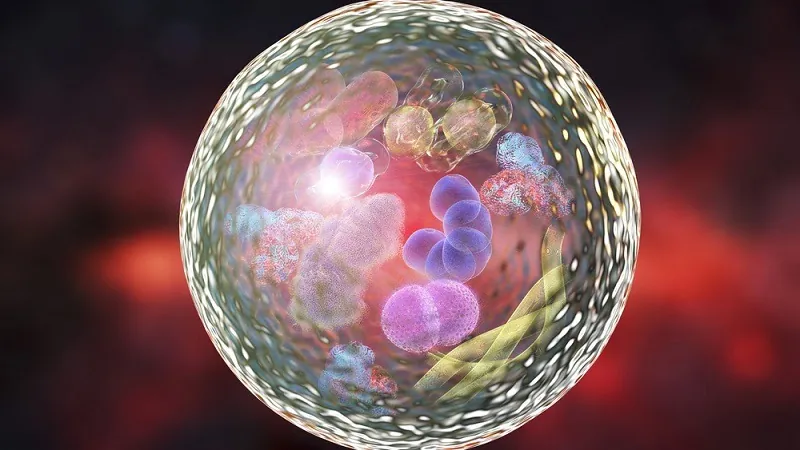In a study published in Aging, Chinese researchers have described how they used computer modeling in order to create a new rapalog that is designed to reduce the long-term impact of stroke.
Reperfusion injury, autophagy, and mTORC1
Stroke and other ischemic events, such as heart attack, occur when a blockage causes blood to stop flowing to certain bodily tissues. This results in hypoxia (a lack of oxygen), which, as expected, causes cells to die. However, when this blood flow is restored, that also leads to damage, which is known as reperfusion injury [1]. As the researchers explained, when this occurs after a stroke, it is known as cerebral ischemia/reperfusion injury (CIRI).

Read More
A previous study has shown that autophagy aids in preventing damage from CIRI in a rat model of stroke [2]. That study had also found that inhibiting mTORC1 through a rapalog called eugenol enhances autophagy.
What is a rapalog?
The well-known compound rapamycin was discovered on Rapa Nui (Easter Island) and has been shown to have multiple metabolic effects. As researchers discovered the pathways that facilitated these effects, they named these pathways after the compound that affected them: this is why mTOR had originally gained the name “mammalian target of rapamycin”.
However, despite its known benefits, rapamycin has potential side effects and toxicity, particularly if given in larger doses. For example, it can affect the mTORC2 pathway in a harmful way. Therefore, researchers have been seeking compounds that exclusively target the mTORC1 pathway. Any compound that affects an mTOR pathway is known as a rapalog.
The researchers of this study used computer modeling to screen for compounds that target the mTORC1 pathway in a more efficient and safe way than rapamycin.
How the modeling was done
First, the researchers used a program to model the mTORC1 binding site, digitally reconstructing the structure. They then ran software in order to find the compounds that can bind to this receptor the strongest, beginning with rapamycin itself. This software was called libdock, and the researchers evaluated compounds based on their libdock score.
The researchers also considered toxicity. Using another piece of software called TOPKAT, they evaluated candidate compounds on multiple estimates of toxicity, including developmental toxicity, blood-brain barrier penetration, mutagenicity, liver toxicity, and their propensity for being carcinogenic (causing cancer).
The results
The researchers found a great many promising compounds, all of which were more effective in targeting mTORC1 than rapamycin. Interestingly, the top two compounds they found in terms of site binding were found to be considerably less mutagenic and less generally toxic than rapamycin, for both mouse and rat estimates. These two compounds were chosen for a follow-up study.
Conclusion
This was entirely done with computer modeling, and the resulting compounds have not yet been tested in animals. However, this research is an excellent starting point; once these compounds can be created and analyzed in rodent models, which these researchers intend to do, the research community can determine if this modeling system is valid and if the compounds it creates are safe and effective enough to proceed to human clinical trials. If this turns out to be the case, a new drug to treat CIRI may be on the horizon.
More generally, if this kind of in silico modeling can be used for drug discovery, it will greatly speed up research, leading to more rapid deployment of useful drugs – possibly drugs that effectively treat currently untreated diseases or directly impact the processes of aging themselves.
Literature
[1] Khalil, A. A., Aziz, F. A., & Hall, J. C. (2006). Reperfusion injury. Plastic and reconstructive surgery, 117(3), 1024-1033.
[2] Sun, X., Wang, D., Zhang, T., Lu, X., Duan, F., Ju, L., … & Jiang, X. (2020). Eugenol attenuates cerebral ischemia-reperfusion injury by enhancing autophagy via AMPK-mTOR-P70S6K pathway. Frontiers in pharmacology, 11, 84.



